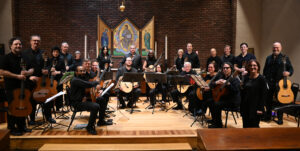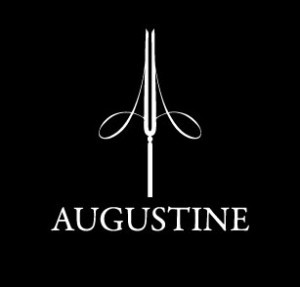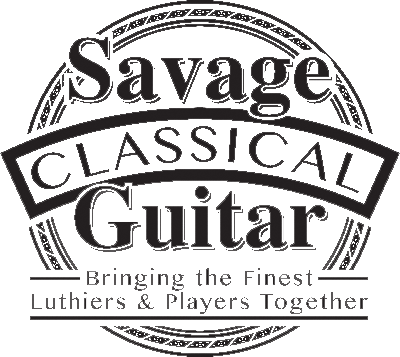by Anthony Bez
March 2004
Tali Roth Trio at Saint Peter’s Church, New York City
Tali Roth, guitar, Leonardo Suarez Paz, violin, Pablo Aslan, bass
Saturday, January 31, 2004
A Concert Celebration of the New CD Tango Nuevo
A not so quiet revolution occurred in tango during our lifetimes due to the artistic vision of Astor Piazzolla. Piazzolla, born in Argentina in 1921, spent his formative years here in New York and moved back to Argentina to play in tango orchestras at the age of 17. The sophistication of a classical musician merged with his innate love of tango and jazz forms through years of study with the likes of Alberto Ginastera and eventually Nadia Boulanger, who encouraged him to remain true to his roots. In the 1950s, his vision of a fusion of the above elements caused tremendous conflict and even violence among elitist symphony followers in Buenos Aires. As well, his approach caused dissension and criticism from traditional tangueros. The persistence of this one man’s vision began to bear fruit by the 1970s when Piazzolla’s Tango Nuevo music reached acceptance and actually began to be popularized. It is now a privilege to be among the elite new tango musicians as it is a formidable test of one’s musicianship as well as an exciting music, full of the drama and sensitivity of traditional tango combined with the high energy of rock and jazz fusion bands.
Internationally-acclaimed guitarist Tali Roth and her trio gave us a tour d’force of the music of Astor Piazzolla at St. Peter’s Church on Saturday night in celebration of their Tango Nuevo CD. Beginning the program with a solo guitar work entitled “Milonga del Angel,” Ms. Roth immediately established her connection to the moody balladic beauty of the guitar. Despite the fact that Piazzolla’s music was written mainly for a variety of ensembles, the guitar here spoke volumes in Ms. Roth’s expressive hands. Towards the end of the piece, just when you were wondering how much more depth one could wring from the main theme, Ms. Roth was joined quietly, dramatically by world-renowned tango dancers Mariela Franganillo and Jorge Torres in a move that absolutely added a new perspective to the performance. This innovation of the dance taking place alongside the guitar was repeated judiciously throughout the program and enhanced the aural experience with a sexy, compelling, visual dynamic. For the second number, “Acentuado,” Ms. Roth was joined by highly sought-after tango musicians Leonardo Suarez Paz on violin and Pablo Aslan on bass. It is an interesting twist that we would now have the whole trio before us as “Acentuado” is actually the rare piece that Piazzolla wrote for solo guitar, here arranged for three instruments by Michael Barry. It has a stunning opening as the musicians use their instruments percussively, followed by runs inspired by high-energy fusion elements.
In a very sweet bit of programming, we were then treated to a traditional tango performed on solo guitar, “El Choclo.” by composer Angel Villodo. It was a reminder of what dimension the subsequent pieces spring from. Returning to Piazzolla for the rest of the program, we next heard “Verano Porteño” in another solo arrangement. Ms. Roth has a thoroughly-studied flair for this type of composition. The musicianship demonstrated in the opening pizzicato thematic motif and the driving harmony and rhythm belie a deep sensitivity and emotion in the interlude of the piece that wells up to a flourish of descending chords before a recapitulation of the opening theme. “Retrato do Milton” ended the first half as a trio arrangement by Jay Kauffman. This is a tribute to the Brazilian composer and singer Milton Nacimento and you can hear harmonies and structure reminiscent of Nacimento throughout the piece. Mr. Suarez Paz lent excitement to this opening with the violin playing countermelody or doubling with the guitar until the moving interlude began with guitar and bass accompaniment passionately played by Ms. Roth and Mr. Aslan. The quiet section became more of a guitar solo punctuated by Ms. Roth’s extraordinarily tasteful dynamic range and tonal variations, until joined once again by the violin in an echo of the primary motif, then evocative, lingering, and beautifully-expressed violin long tones building to a full blown recap and powerful ending.
The second half of the program began with the solo guitar arrangement of “Adios Nonino.” This piece begins with the Tango Nuevo feel but does not spend a lot of time developing before lapsing into a ballad. The ballad feel was maintained throughout as Ms. Roth contributed a rare pathos to this piece, which was written upon the death of Piazzolla’s father, Nonino. “Compadre” followed for trio. This is a rather amusing work that takes advantage of dissonances, sforzandi tones and noises, percussive effects, harmonics, violin glissandi interspersed with cycle of fifth resolutions made more than obvious by the use of trills and long tones giving the effect of a recitative. Still, it is an effective work with the rhythmic timing and interplay of Ms. Roth’s guitar, Mr. Suarez Paz’s violin and Mr. Aslan’s bass.
A change in program allowed us to hear an original setting of a Piazzolla piece. “Cafe 1930” is one of four movements of the famously sexy Histoire du Tango, a historical portrait of the development of tango for flute or violin and the guitar. Here is pure Piazzolla writing exquisite parts. This movement is about the cafes where the tango eventually took hold after it was purportedly created in the bordello a generation earlier. It is a melancholy movement that relies on melody and a bit of drama. It becomes rather sweet in its interlude. Violinist Leonardo Suarez Paz as well as guitarist Tali Roth displayed their comfort in the genre here, easily moving from sentimentality to passion, pregnant anticipation to languidness — a heartfelt portrait by both of them.
The last three pieces on the program consisted of solo guitar arrangements of “Muerte del Angel” and “Primavera Porteña” as well as a trio arrangement of “Otono Porteño.” The “Primavera Porteña” solo arrangement, as well as the “Verano Porteño” and “Milonga del Angel” from the first half are most likely the Baltazar Benitez arrangements referred to in the program. These are highly technical arrangements of extremely demanding music. Ms. Roth handled them with aplomb and outstanding virtuosity. Despite their driving rhythmic nature, she always found exciting ways to shape them to her expression and vision. The “Otono Porteño” started out with a bang as Mr. Suarez Paz scratched at the strings behind the bridge of his violin for sound effects then supported the guitar line before the whole piece sank quickly into a kind of bluesy vocabulary. There was no lack of dimension here. The interlude sections became rather dreamy solos first for guitar, then violin held up respectively by Pablo Aslan’s broad pad of arco bass lines and slides.
“Gallo Ciego,” a traditional tango by Augustin Bardi, was the perfect way to end the concert. This was like listening to a traditional tango band improvising with abandon. In the background on and offstage we were treated again to the gorgeous dancing of Mariela Franganillo and Jorge Torres while the violin took its lead accompanied by tango rhythm on guitar and interspersed with delicious melodic and harmonic bowed accompaniment by Pablo Aslan. The evening ended with everyone onstage making a contribution to the rich history of tango and the future of Tango Nuevo.









